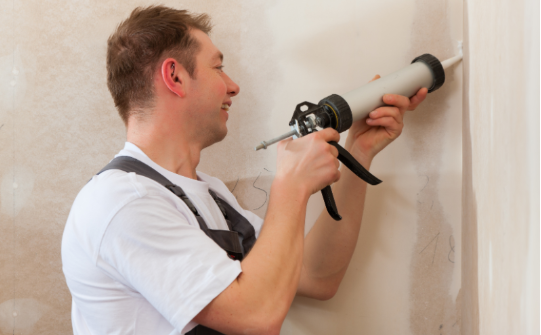Grouting is essential in building and maintaining infrastructure as it helps to waterproof, reinforce, and seal structures.
Discover how PU grouting compares with conventional grouting techniques and highlight their advantages and disadvantages, assisting experts in selecting the best course of action for their grouting projects.
Autoespart | wellnestrx | healthcbeing | bizpulsenet | JackpotHavens
What is PU Grouting?
PU grouting, or polyurethane grouting, involves injecting polyurethane resin into cracks, voids, or soil to fill gaps and create a waterproof seal. PU grout injection is widely used in repairing concrete structures, preventing water leakage, and stabilising foundations. This process uses a specialised grouting pump to inject the resin precisely, ensuring effective sealing and reinforcement.
What Are Traditional Grouting Methods?
Traditional grouting methods, such as cementitious and epoxy grouting, rely on cement, sand, or epoxy to fill voids or cracks. These methods have been used for decades in various applications, including structural repairs and soil stabilisation. Unlike PU injection, traditional grouting often involves manual mixing and application, which can be labour-intensive.
Pros of PU Grouting
Effective Waterproofing
PU grouting is highly effective for waterproofing applications. The polyurethane resin reacts with water, expanding to seal cracks and voids tightly, preventing further water intrusion.
Flexibility
Polyurethane resin remains flexible after curing, allowing it to adapt to structural movements and vibrations without losing its sealing properties. This characteristic makes it ideal for dynamic structures or areas prone to minor shifts.
Quick Curing Time
PU grout injection cures rapidly, minimising downtime during construction or repair projects. This efficiency makes it a preferred choice for emergency repairs.
Versatile Application
PU injection can be used in diverse scenarios, including basement waterproofing, tunnel repairs, and soil stabilisation. Its versatility makes it a go-to solution for many industries.
Minimal Disruption
Using a grouting pump for precise application ensures minimal disruption to the surrounding structure. This characteristic is vital in delicate repair projects where structural integrity must be maintained.
Cons of PU Grouting
Higher Initial Costs
The materials and equipment required for PU grouting, such as specialised grouting pumps, can be more expensive than traditional methods.
Skilled Labour Required
PU grout injection requires trained personnel to operate the equipment and ensure proper application. This characteristic can increase labour costs.
Limited Temperature Range
Polyurethane resin may have reduced effectiveness in extremely high or low temperatures, making it unsuitable for specific environments.
Pros of Traditional Grouting Methods
Cost-Effective
Cementitious and epoxy grouting materials are generally less expensive than polyurethane resin, making traditional methods more affordable for large-scale projects.
Widespread Availability
Traditional grouting materials are readily available, making them a convenient option for contractors in remote areas.
High Compressive Strength
Epoxy grouting offers exceptional compressive strength, making it suitable for heavy-duty structural repairs and industrial applications.
No Specialised Equipment Needed
Traditional grouting methods typically require basic tools and equipment, reducing upfront investment costs.
Cons of Traditional Grouting Methods
Longer Curing Time
Cementitious and epoxy grouts often take longer to cure, extending project timelines and potentially increasing labour costs.
Limited Flexibility
Unlike PU grouting, traditional grouting materials are rigid and may crack over time if the structure undergoes movement or vibrations.
Labour-Intensive Process
Traditional grouting methods often involve manual mixing and application, which can be time-consuming and require more manpower. PU grouting, with the use of a grouting pump, requires less time and worker investment.
Less Effective Waterproofing
Cementitious grouts are less effective at sealing water leaks, as they do not expand to fill voids completely like polyurethane resin.
Key Factors to Consider
Project Requirements
Determine the specific needs of your project. PU grouting is ideal for waterproofing and dynamic structures, while traditional methods are better for static and heavy-duty applications.
Budget Constraints
Consider the overall budget, including material costs, labour, and equipment. While PU grouting may have higher upfront costs, its efficiency can reduce long-term expenses.
Environmental Conditions
Evaluate the temperature and environmental conditions at the project site. PU injection may not be suitable for extreme temperatures, whereas traditional methods can perform reliably in diverse environments.
Skill and Equipment Availability
Assess the availability of skilled personnel and specialised equipment like grouting pumps. If these are limited, traditional grouting methods might be more feasible.
ClubCardCastle | Betndwin | StarSpinsino | EliteBetZone | care4insure
Conclusion
There are benefits and drawbacks to both PU grouting and conventional grouting techniques. Although traditional methods are widely accessible and reasonably priced, PU injection offers superior waterproofing, flexibility, and speed. The particular needs of the project, the available funds, and the surrounding circumstances all influence the approach selection. Construction experts can choose the best grouting option for their requirements by carefully weighing these variables.
Visit Adcos Asia to learn more about our grouting products and services.

